-
 Want to Pamper Your Taste-Buds this Pongal? Here are Mouth-Watering Pongal Recipes You can't Miss in 2019
Want to Pamper Your Taste-Buds this Pongal? Here are Mouth-Watering Pongal Recipes You can't Miss in 2019
-
 Diwali Snacks You Can Make in Your Kitchen, which Are As Healthy As They Are Delicious! (2021)
Diwali Snacks You Can Make in Your Kitchen, which Are As Healthy As They Are Delicious! (2021)
-
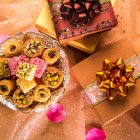 Make Gifting Easy this Festive Season with a Gift Pack: 11 Awesome Ideas for Diwali Gift Packs for 2019
Make Gifting Easy this Festive Season with a Gift Pack: 11 Awesome Ideas for Diwali Gift Packs for 2019
Rituals of Janmashtami
Fasting

Fasting is an important ritual of Janmashtami. This is a very important festival for Hindus. Janmashtami is celebrated because it is Lord Krishna's birthday. Thus, fasting is done by almost all the devotees. This is also because a large population actually believes in Lord Krishna.
The fast is broken only at midnight when the Lord was supposed to be born. However, people do eat during the fast. They consume only milk and milk products. This is because these items are considered as favourites of Lord Krishna. However, certain devotees also practise Nirjala fast.
Nirjal fast is a difficult fast. It involves fasting without having a single morsel of food or a drop of water. A lot of devotees also keep the fast for two days. The first day is before the birth of Lord Krishna while the other day is on the birthday of Lord Krishna.
Chanting

Chanting is a common thing during Janmashtami. It is people's way of remembering the Lord. People take his name and sing devotional songs dedicated to Lord Krishna. There are special slokas and mantras dedicated to him. People usually indulge in chanting those.
It is said that this will please the Lord and people can easily seek his blessings. Apart from that, devotees also sing bhajans while offering aarti to the statue of Lord. It is a very common norm for the celebration. People especially dress up for the aarti as well.
Apart from all this, there is also a ritual of chanting Krishna's name for 108 times. There are 108 different names that Lord Krishna has. All of them are chanted on this day. Also, while doing this the Lord is showered with flowers. Hence, a devotional atmosphere is created everywhere.
Dahi Handi
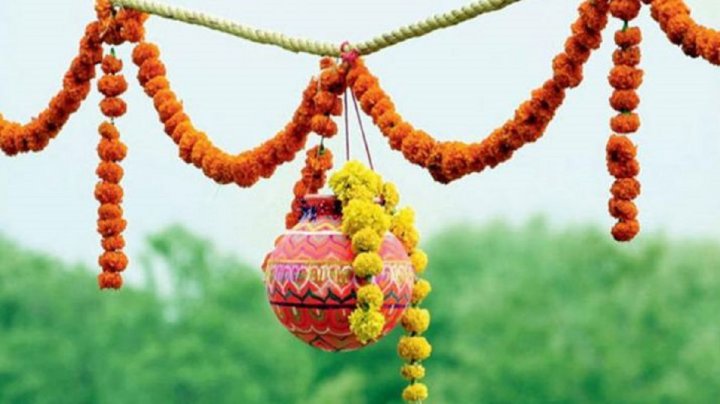
Lord Krishna used to love eating fresh butter. He was known to break the dahi handis carried by local women of the villages. Thus, in his remembrance people have made this a sport. This ritual is carried out in almost all parts of the country.
However, the best celebrations are carried out in cities like Mathura, Mumbai, Vrindavan and Dwarka. The whole ritual is basically an enactment of Lord Krishna trying to break the dahi handi. The pot is tied at a height.
Usually, a group of young boys make pyramids and try to reach the pot. Then, they try breaking the handi. In some places, various groups come together and a competition is held. They also earn cash prizes for the same. This tradition of dahi handi creates a vibe of excitement and festivity among all.
Why is Janmashtami celebrated?
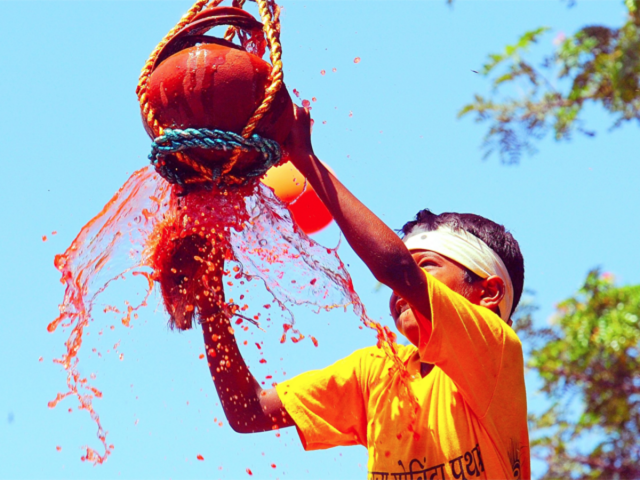
Janmashtami is also called as Krishna janmashtami. It is a popular festival as it is the birthday of Lord Krishna. It falls in the monsoon month and is celebrated with much excitement and zeal. According to the Hindu calendar, this day falls on the ashtami or eighth day of Bhadon month.
There is no exact information on the origin of this festival. It probably started 1000 years back. There are a lot of legendary stories encircling around his birth as well. However, the most common story is that Lord Krishna is the eighth incarnations of Lord Vishnu. He took birth to kill the dangerous demon Kansa.
This is the story based on Mahabharata. Lord Krishna took birth in cellular jail in the Dwapar Yug. His biological parents were Devaki and Vasudeva. However, his father escaped with the newborn child from the jail and crossed the river on a stormy night. He gave the Lord to his sister because the demon Kansa was after his life. Lord Krishna went through a lot of difficulties and so, people fast before his birth.
Different Delicacies of Janmashtami that You Can Eat while Fasting Too
Sabudana Khichdi
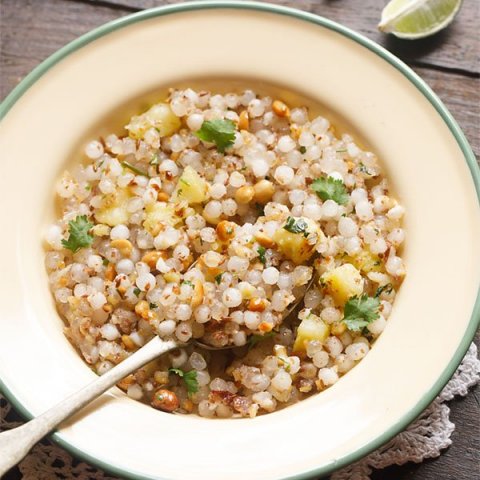
Sabudana khichdi is one of the most eaten items during Janmashtami. It can be had during fasting as well. It is important to remember to soak the sabudana overnight. The soaking time also changes based on the type of tapioca pearls.
- Sabudana
- Potatoes
- Green chilies
- Coriander leaves
- Cooking oil
- Peanuts
- Salt
Ingredients
- Make sure to soak the sabudana overnight. Some people suggest soaking them for 4-6 hours. However, you will get the best results, if you soak them overnight.
- Make sure to rinse the sabudana thoroughly before soaking them. This will clear all the starch from them.
- It is important to use 1:1 ratio which means you need to use 1 cup of water for 1 cup of sabudana.
- Check in the morning. You should be able to smash the sabudana completely.
- Add oil and cumin seeds first in the pan. Let it sizzle for a bit.
- Add potatoes in it. Stir them until cooked.
- After that, add raw peanuts and let it cook for 2-3 minutes. After that, add curry leaves and cook for some more time.
- Then, add the drained sabudana. Cook until the pearls become translucent. Do not cook for long or they will stick to each other. You can add lemon juice and coriander leaves if you want.
Method
Coconut Ladoo
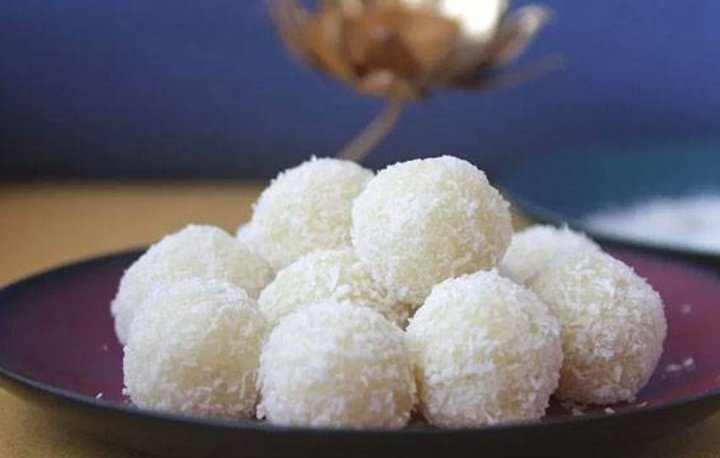
On this auspicious occasion, it is customary to make sweets. Lord Krishna is fond of milk and milk products. Thus, a lot of devotees make such sweets and offer it to the Lord. One of the simple things that you can make on Janmashtami is coconut ladoos.
- One tin of condensed milk
- 2 cups of desiccated coconut powder
- Half cup of cherries
Ingredients
- Mix the condensed milk and half cup of desiccated coconut powder in a cup.
- Stir it on low flame for about 10 minutes.
- Set aside the mixture and let it cool.
- Then, roll them in to ladoos. Decorate them with cherries.
Method
Sabudana Vada

Sabudana vada is a crisp and fried snack. A lot of people love them. It is a popular Maharashtrian snack that is eaten during fasting and tea time. It is specially made during Janmashtami as well.
- 1/2 cup Sabudana
- 1/4 cup Peanuts
- 1 tbsp Coriander leaves
- 1 cup Potatoes
- 1 tsp cumin seeds
- 1 to 2 green chillies chopped
- 11/2 to 2 tbsp flour
- Cooking oil
Ingredients
- Soak the sabudana overnight and rinse them in the morning.
- Press them in the morning to check if the are soaked well.
- On the other side, roast the peanuts until they turn golden.
- Let them cool and keep the potatoes to boil.
- Once the peanuts cool, blend them in a mixer.
- Then, mash the potatoes.
- Mix the sabudana, potatoes, peanuts, green chilies, salt and cumin leaves together.
- Add some dough also as it helps from breaking the sabudana vada while frying.
- Now, make flat balls of the mixture.
- Heat the oil in a vessel. Once the oil is hot, add the vadas for frying.
- Cook on a medium flame. They need to turn golden and crispy.
- You can serve them with a coriander chutney.
Method
Vrat Wale Aloo
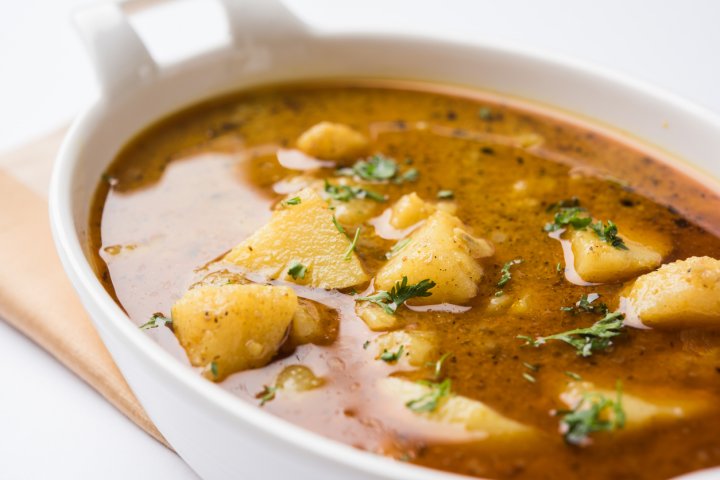
Vrat Wale Aloo is a little different from the normal ones. It is very simple to make and tastes amazing. There are a lot of variations to this as well. However, you can try this one with pooris.
- 3 medium potatoes
- 3 medium tomatoes or about 1 cup of chopped tomatoes
- 1 or 2 green chilies, chopped
- ½ teaspoon ajwain (carom seeds) or cumin seeds (jeera)
- 1.5 to 2 cups water
- 2 tablespoon oil
- rock salt or sendha namak as required
Ingredients
- Wash the potatoes and add them in the cooker with 3 cups of water.
- Sprinkle a teaspoon of salt in the cooker. Boil them in the cooker for 4-5 whistles.
- After it cools down, peel the skin.
- Heat 2 tablespoons of oil in a pan. Add carom seeds in them and let them crackle.
- Add the chopped green chilies. Let is saute for a minute.
- Now, add the tomatoes and saute until the oil starts to leave the mixture.
- Continue to cook until the tomatoes turn soft. Then, add the potatoes in the gravy. Crumble them in the pan.
- Add 2 more cups of water. Add salt as well and stir it properly.
- Simmer till the gravy turn hot. Garnish with coriander leaves.
Method
Singhare Ki Poori
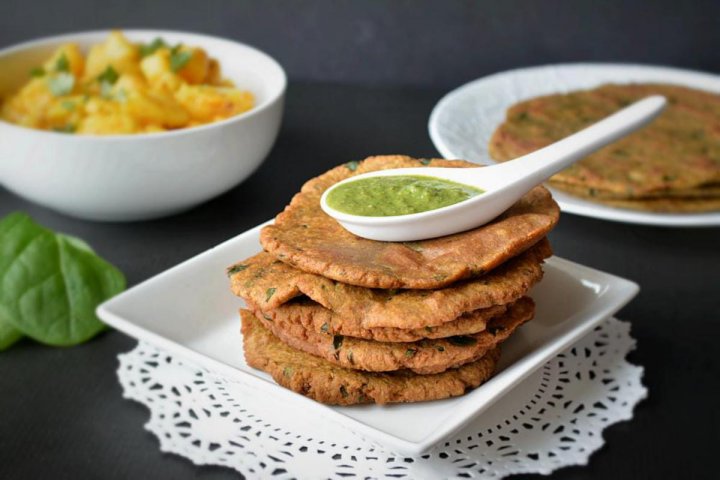
Singhare ki Poori is a delicious recipe. It is almost liked by all age groups. It is prepared using very simple ingredients. If you haven't tried it, you should do it already. Check out the recipe.
- 1 tablespoon minced green chillies
- 2 teaspoon cumin powder
- 1 cup mashed potato
- sendha namak as required
- 5 tablespoon refined oil
- water as required
- 2 cup water chestnut flour
Ingredients
- You will have to boil the potatoes for this poori. Add them in a cooker with salt. Blow 3-4 whistles.
- After that, let them cool. Then peel and mash them.
- Then add potatoes, oil, cumin powder, green chili, chestnut flour and water in a deep bowl.
- Mix the ingredients and knead the dough.
- Now, take the small portion of the dough and roll round pooris.
- Make sure to roll the pooris in even size.
- In a vessel, heat the oil. Once the oil is hot, add pooris in it. Deep fry them until they become golden brown.
- Serve them with aloo sabzi.
Method
Samvat Rice Vrat
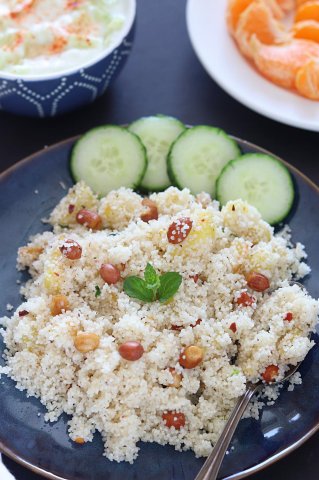
People usually eat food without onion and garlic during janmashtami. Thus, you have to think of such kind of recipes. Samvat vrat rice is that kind of recipe. However, it is very tasty and easy to make as well.
- Sama Rice (1/2 cup)
- Water (1 1/2 up)
- Ghee 1 tablespoon
- Cumin seeds 1/4 teaspoon
- Black pepper - 3-4
- Cloves - 1-2
- Cardamom - 2
- Cashews - 10-12
- Almonds - 8
- Raisins - 20
- Sendha Salt- 1/2 teaspoon or according to the taste
Ingredients
- Clean and wash the rice. Then, soak it for 20 minutes.
- Grind black pepper, cloves and cardamom. Cut almonds and cashews into 2 pieces. Break the stems of raisins and wash them.
- Heat 1 tablespoon of ghee in the pan. Put all the dry fruits in it and roast then until they turn light pink in colour.
- Take another pan and add ghee in it. Roast black pepper, cloves and cardamom in it.
- Add water and salt in the same pan. Once it starts to boil, add rice in it.
- Leave a little bit of dry fruits to garnish and then add the rest in the vessel.
- Cook until the rice is tender.
- The rice is now ready. Garnish it with the remaining dry fruits.
Method
Jeera Aloo
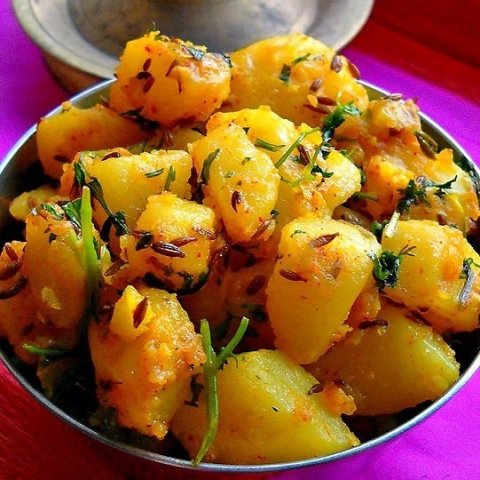
Potatoes are the most used ingredient in Janmashtami fasting. People make different types of patota sabzis. There are a lot of variants to it. One of them is the jeera aloo. Read on for the recipe.
- 5 to 6 medium size boiled potatoes (aloo)
- ½ teaspoon salt
- water as required
- 3 tablespoons oil
- 2.5 teaspoons cumin seeds (jeera)
- 2 to 3 green chilies, finely chopped
- ½ teaspoon turmeric powder
- ½ teaspoon red chili powder
- salt as required
- ¼ cup chopped coriander leaves (cilantro leaves)
- 3 to 4 teaspoons lemon juice or add as per taste
Ingredients
- Rinse the potatoes in water. Then add them in the pressure cooker and add appropriate water.
- Add 1/2 spoon of salt and blow 3 to 4 whistles.
- Let them cool down and then remove their skin.
- Take a pan and heat 3 tablespoons of oil. Let it be hot.
- Then, add 2.5 spoons of cumin seeds and let them crackle.
- Add green chillies and mix them properly.
- Now add the potato cubes and mix them properly.
- Add 1/2 teaspoon of turmeric and red chilli powder. Add salt based on your taste.
- Cook the potatoes for 2-3 minutes on medium flame.
- Add coriander leaves and lemon juice and mix them well.
- Serve it rotis or pooris.
Method
Danyachi Amti
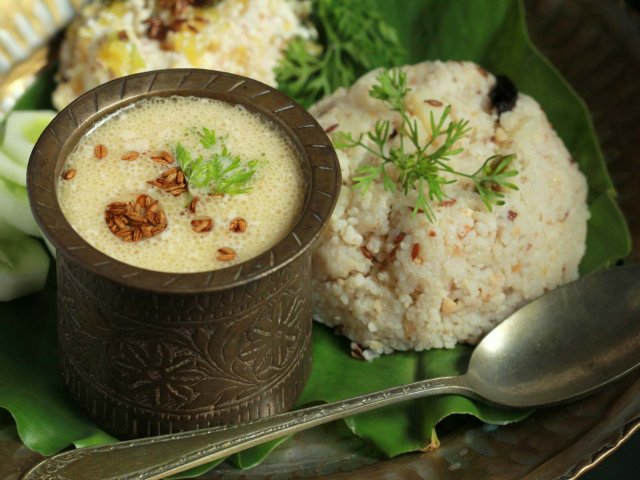
Danyachi Amti is a groundnut based curry which is especially made during fasts. It is a Maharashtrian dish and it tastes delicious. It is accompanied by a dish called Bhagar. It is made with simple ingredients.
- 1 cup Raw Peanuts (Moongphali) , roasted
- 2-1/2 cups Water
- 2 teaspoon Sugar
- 1/4 cup Buttermilk , or 4-5 pieces amsul (dried kokum skin)
- 2 teaspoons Cumin seeds (Jeera)
- Ghee , as required
- 3-4 Green Chillies , finely chopped
- Salt , to taste (or kala namak when fasting)
- 3 sprig Coriander (Dhania) Leaves , chopped
Ingredients
- Begin by grinding the groundnuts in a mixer. Make a paste. You can use water as required in the blending
- Take a pan and add the paste along with water, salt, amsul and sugar.
- Boil it for 5-6 minutes until the raw smell goes away.
- If you are using buttermilk, then add it once the whole mixture is completely boiled.
- Take it off the heat. Take another pan and add ghee in it.
- Add cumin seeds ot the ghee and let them sizzle. Then add green chillies.
- Saute them for a bit and then add the paste mixture.
- Garnish the amti with coriander leaves and serve it with sabudana khichdi.
Method
Sesame Ladoo

If you are looking to make something sweet this janmashtami, then you should opt for sesame ladoos. They are crunchy and soft at the same time. They melt in your mouth if you have made it the right way. Read and try the recipe for sure.
- 100 grams white sesame seeds
- 150 grams jaggery
- Little grated coconut
Ingredients
- Wash the sesame seeds and dry it on a white muslin cloth.
- Once they are dried, roast them until they turn golden brown.
- Then powder them coarsely in a mixture.
- Take a pan and add jaggery in it. Add water to give it a consistency and heat it.
- Switch off the gas and add the coconut and dry sesame powder.
- Shape them in ladoos while they are hot and you are down.
Method
What Should You Offer to Sri Krishna?
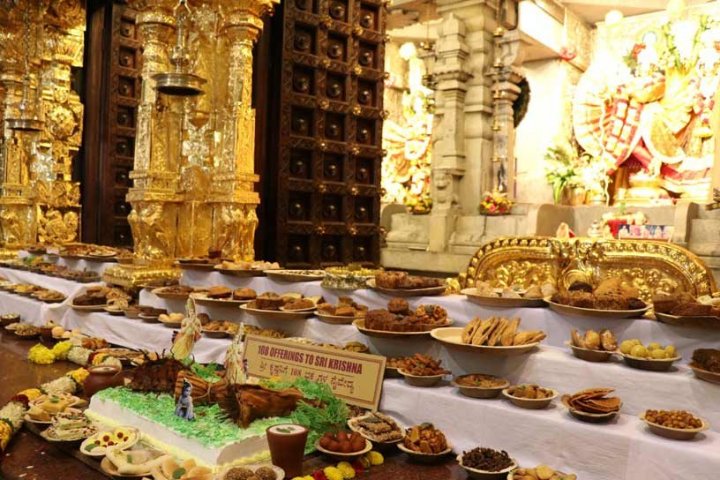
There are a lot of things that you can offer to Sri Krishna. However, everyone knows his love for milk and milk products. Krishna was said to be raised amongst the cowherd in Gokul. This is one of the reasons he enjoys milk as well.
Krishna used to love butter as a child. There are a lot of stories on this as well. in fact, the whole of Vrindavan was tired of him as he was a very mischievous child who used to steal the butter. Thus, the ritual of dahi handi also comes into existence.
Hence, you can offer butter and milk to the Lord. You can also offer sweets made out of milk like kheer and basundi. Makhan mishri and malpua are also Lord's favourite. Nowadays, people also take the liberty to offer dry fruits and chocolates to Krishna.
-
 Diwali Snacks You Can Make in Your Kitchen, which Are As Healthy As They Are Delicious! (2021)
Diwali Snacks You Can Make in Your Kitchen, which Are As Healthy As They Are Delicious! (2021)
-
 भारतीयों का मिठाई के लिए एक विशेष झुकाव है: 10 सबसे स्वादिष्ट भारतीय मिठाइयाँ विकल्प जिन्हे देख कर आपके मुंह में पानी आ जायेगा (2019)
भारतीयों का मिठाई के लिए एक विशेष झुकाव है: 10 सबसे स्वादिष्ट भारतीय मिठाइयाँ विकल्प जिन्हे देख कर आपके मुंह में पानी आ जायेगा (2019)
-
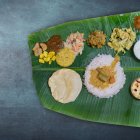 Bring the Flavours of Onam Sadhya to Your Kitchen! List of 10 Onam Sadhya Dishes Which Are As Easy to Make As They Are Delicious to Eat (2019)
Bring the Flavours of Onam Sadhya to Your Kitchen! List of 10 Onam Sadhya Dishes Which Are As Easy to Make As They Are Delicious to Eat (2019)
-
 Fasting Does Not Mean Starving! Keep Your Energy Up with These 9 Delicious Navratri Recipes & Fasting Tips for Navratri (2019)
Fasting Does Not Mean Starving! Keep Your Energy Up with These 9 Delicious Navratri Recipes & Fasting Tips for Navratri (2019)
-
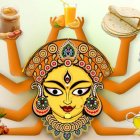 Planning to Fast During Navratri? Here are 9 Quick and Healthy Recipes for Your Navratri Fast in 2019!
Planning to Fast During Navratri? Here are 9 Quick and Healthy Recipes for Your Navratri Fast in 2019!
It's All about Inner Celebration
Yet, even when every place cherishes the day in its own way, Janmashtami marks that one day in the calendar when communities come together to immerse themselves in raas leelas, melas and devotional hymns. The diversities flourish in a special unity and joy becomes the sole mode of communication between people of various races and languages.

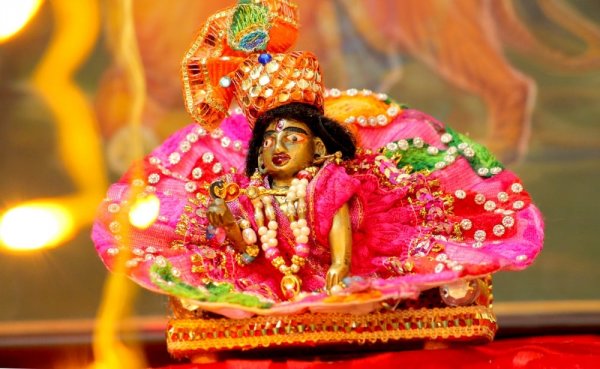
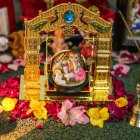
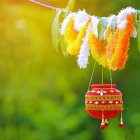
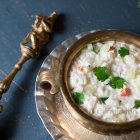
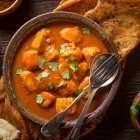

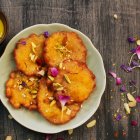
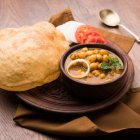
 Highlight the Best Facets of Your Incomparable Beauty: Discover the Best Face Highlighter Currently Available in India and Everything You Need to Know About Using Face Highlighters for Maximum Effect (2023)
Highlight the Best Facets of Your Incomparable Beauty: Discover the Best Face Highlighter Currently Available in India and Everything You Need to Know About Using Face Highlighters for Maximum Effect (2023)
 Forget the Blemishes and Get that Picture Perfect Flawless Radiance on Your Face: Check out the Best Foundations for Oily Skin Currently Available in India and Everything You Need to Know About Makeup Foundations (2023)
Forget the Blemishes and Get that Picture Perfect Flawless Radiance on Your Face: Check out the Best Foundations for Oily Skin Currently Available in India and Everything You Need to Know About Makeup Foundations (2023)
 Make Your Presence Felt Wherever You Go: Discover the Best Perfumes Under 2000 for Both Men and Women to Announce Your Arrival and Make Any Occasion Memorable (2023)
Make Your Presence Felt Wherever You Go: Discover the Best Perfumes Under 2000 for Both Men and Women to Announce Your Arrival and Make Any Occasion Memorable (2023)
 Protect Your Oily Skin from the Harmful Rays of the Sun: Discover the Best Gel Based Sunscreens for Oily Skin and Everything You Need to Know Before Buying One (2023)
Protect Your Oily Skin from the Harmful Rays of the Sun: Discover the Best Gel Based Sunscreens for Oily Skin and Everything You Need to Know Before Buying One (2023)
 Minor Blemishes and Wrinkles Affecting Your Confidence? Check out the Best BB Creams to Conceal Your Worries and Nourish Your Skin to Restore the Healthy, Radiant and Glowing Complexion Back Again (2023)
Minor Blemishes and Wrinkles Affecting Your Confidence? Check out the Best BB Creams to Conceal Your Worries and Nourish Your Skin to Restore the Healthy, Radiant and Glowing Complexion Back Again (2023)
